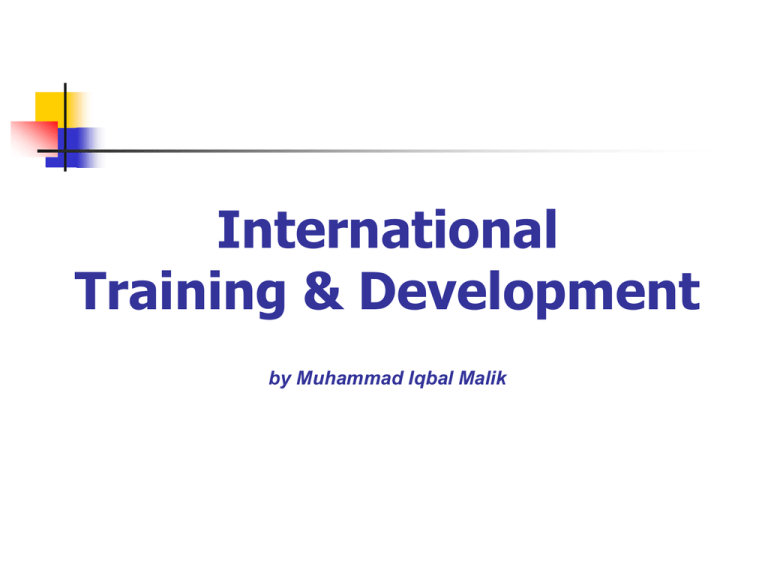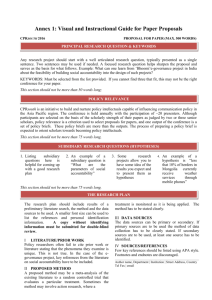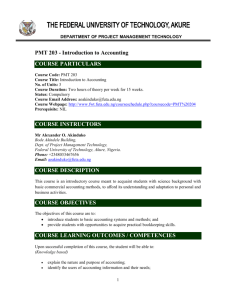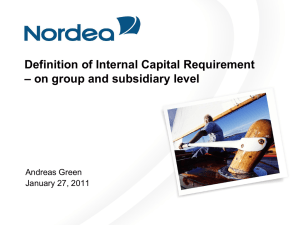International Training and Development
advertisement

International Training & Development by Muhammad Iqbal Malik Training & Development: Recap T&D is the process of imparting knowledge, skills & attitudes to enhance work performance Training is focused on job specific needs Development goes beyond job requirements The T&D Context Environment Economic, political, cultural, legal etc. Organization Mission, strategy, organization structure, technology, people etc. Training & Development Adapted from Foundations of Human Resource Development, Richard A. Swanson, Elwood F. Holton T&D Process Evaluation knowledge, skills, attitudes, performance, commitment Implementation instruction and execution of training programs etc. Development content, training material & other resources etc. Design training programs, curriculum, learning experiences etc. Analysis Context, problems, opportunities, job etc. Continuous feedback & improvement The International Context Multinational and multicultural factors Geographical barriers Language & communication barriers Geopolitical considerations Intergovernmental & international organizations/agencies involvement The International Context International and diverse workforce Continuous staff relocation & rotation Heterogeneous systems, infrastructure and communication channels Global cutthroat competition Highly complex business environment Corporate Headquarter Activities Corporate Head Quarter International Research - Cultural - Economic - Political - Legal etc. Expatriate Training - Cultural awareness - Sensitivity training - Language training - Political, legal etc. HCN/TCN Training - Corporate culture - Standards - Systems & Procedures - Technical training - Corporate strategy Global mgmt. training - globalization - management dev. - international team dev. - training of trainers - cross-cultural skills International Subsidiary Activities International Subsidiary HCN Training - Corporate culture - Corporate language - Corporate standards - Systems & Procedures - Technical training - Corporate strategy PCN Training - Regional culture - Language training - Subsidiary culture - Subsidiary standards - Subsidiary procedures - Business environment & competition - Political, legal etc. Byproduct of Headquarter Training T&D activities often result in building relationships and understanding among different individuals, groups and functions of the corporation Components of Cultural Training: Mendenhall, Dunbar Oddou Model Training Methods Cultural orientation, culture assimilator, language & sensitivity trainings, field experiences Training Rigour Training Duration Low, medium or high level Days, weeks, months Cultural Training Contingencies The factors that influence the nature of cultural training components include: Degree of interaction required in the host culture Similarity between the individual’s native culture & the new culture Types of Predeparture Training Area Studies Programs Area, cultural & environmental briefings via lectures, movies, books Cultural Assimilators Aims at assimilating (becoming like, behaving, thinking like) other cultures Involves interaction of multi-cultural groups Types of Predeparture Training Language Training Foreign language training often neglected due to “perceived” position of English Has strategic implications – - ability to monitor competition - process environmental information Types of Predeparture Training Sensitivity Training General cross cultural skills Orientation to sensitive aspects of the host culture e.g. religious, political & social sensitivities Field Experiences Experiential workshops May also involve preliminary trip to the host country Cultural Training Scenarios Contingency Desired Component(s) Low level of interaction expected High degree of similarity between cultures Training duration less than a week Use training methods like area or culture briefings via lectures, movies, books Long term exposure to host culture with some interaction with host members Higher level of training rigour desired Training duration to be longer - 1 to 4 weeks Use training methods like culture briefings, culture assimilators (practicing to getting absorbed in the host culture) and role plays Very different host culture High interaction expected High level of cross cultural training rigour Training duration should be fairly long e.g. two months Use training methods like culture briefings, culture assimilators, sensitivity training, field experiences, intercultural experiential workshops Mendenhall, Dunbar Oddou Model: Drawbacks Focus on cultural aspect only No suggestion on integration of new task of individual with new culture Cultural Awareness Training and Assignment Performance Contextual & Situational Factors - time available - duration & nature - cultural toughness Individual Differences - locus of control - efficacy expectations - outcome expectations Motivation Cultural Awareness Training Attention Retention Reproduction Incentives Performance Management System Skill Development - self dimension - relational perception - perceptional Adjustment & Performance Predeparture Training for HCN/TCNs All types of staff should be provided with suitable predeparture training Often neglected for HCNs/TCNs Comments by an Australian TCN: “We were third-class nationals in Japan. The Americans received cultural training about Japan before they left the United States. We were just given our plane tickets.” HCN Training High costs of T&D Trained HCNs are attracted by Competitors Unexpected training costs in joint ventures, acquisitions & mergers Training as a tool for gaining commitment & loyalty in some cultures Headquarter training of HCNs Involves technology, operations, standards, systems and procedures Corporate vision, culture and norms Development of informal relationships and networks Staff Development Foreign assignments serve as a mechanism to develop international expertise and global vision Developing a pool of international managers International job rotation Workshops, seminars, lectures and international field trips Diversity & leadership skills International Assignments and Career Development Enhances management potential Higher employee expectations of career advancement through international experience Insufficient research so far to establish the relationship between international assignment and career path Expatriate Career Decision Points Predeparture Training International Assignment 5. Reassignment 4. Exit Organization 1. Recruitment & Selection 3. Premature Return 2. Deselect Parent Repatriation







